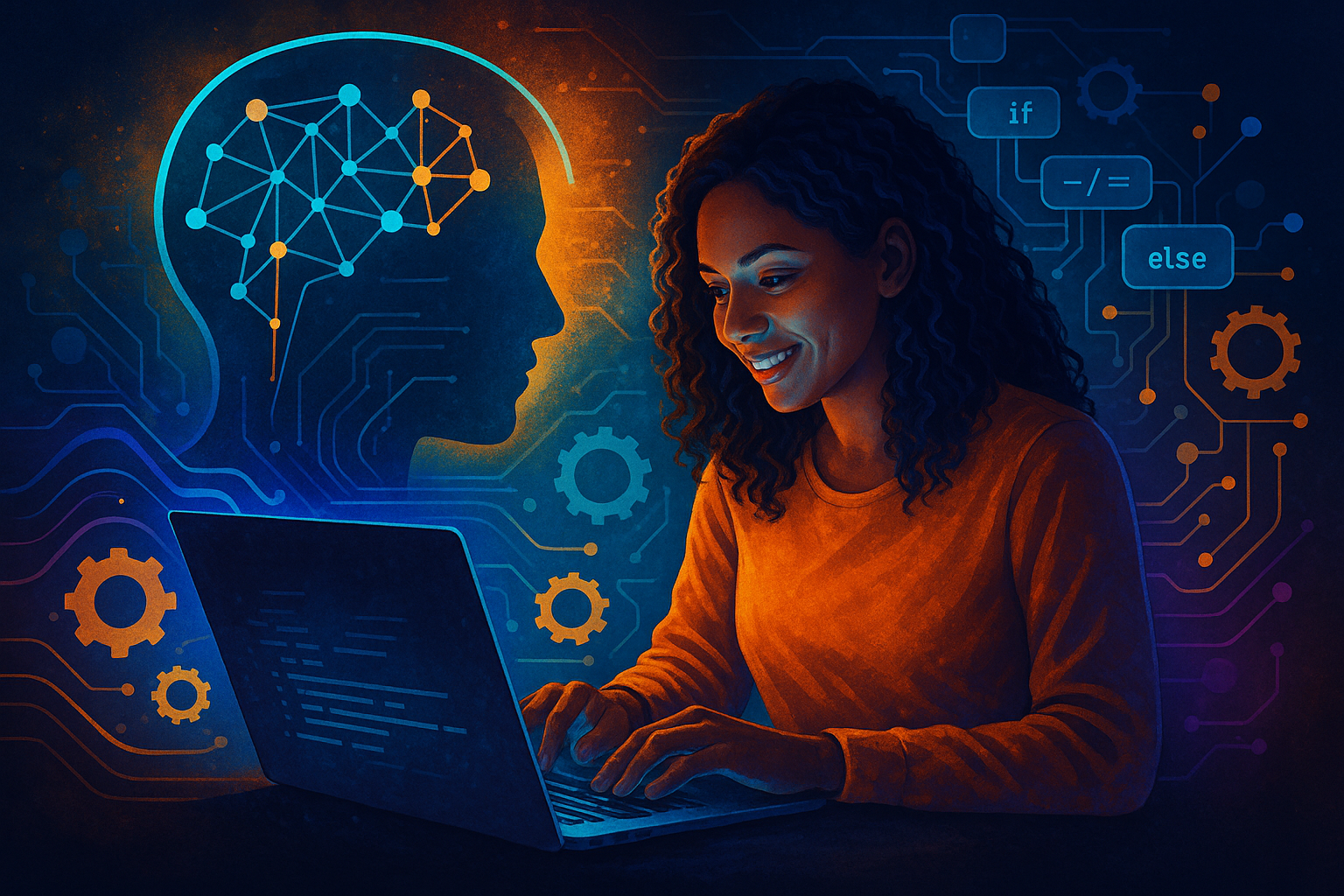AI isn’t just changing how we code-it’s redefining how teams deliver value, collaborate, and adapt in a world where speed, quality, and enablement are everything.
The New Delivery Paradigm: AI-First Development
AI is now at the heart of modern delivery enablement. What was once science fiction-AI generating production-ready code, fixing bugs in real time, and integrating with project management tools-is now a practical reality for high-performing teams. Industry leaders predict that AI could write up to 90% of code within a year, fundamentally altering the software development lifecycle and the way organizations deliver products[3][4][5].
But this isn’t just about speed. AI is ushering in a new way of working-what Andrej Karpathy calls “vibe coding.” Here, developers communicate intent in natural language, review AI-generated solutions, and iterate rapidly, shifting the focus from manual implementation to high-level problem solving and delivery orchestration.
What is “Vibe Coding”?
“Vibe coding” is more than a catchy phrase-it’s a delivery enablement superpower:
- Natural language prompts: Engineers describe what they want, and AI generates code, tests, and even documentation.
- Conversational iteration: Teams collaborate with AI, refining outputs through dialogue instead of manual rewrites.
- Rapid feedback loops: AI accelerates prototyping, bug fixing, and integration, enabling more cycles of learning and improvement.
As NVIDIA’s Jensen Huang put it: “Everybody in the world is now a programmer… The programming language is human.” This democratization is lowering barriers, but it also demands new approaches to enablement, quality, and skill development[4][5][6].
Delivery Enablement: The Evolving Role of the Engineer
As AI automates routine coding, engineers are empowered to focus on what matters most for delivery:
- System design and architecture: Shaping robust, scalable systems.
- Quality assurance: Validating AI outputs and ensuring standards.
- Prompt engineering: Framing problems and requirements clearly for AI.
- Integration and orchestration: Connecting AI-generated components into cohesive solutions.
This shift means delivery enablement is less about “doing the work” and more about enabling teams-through training, process evolution, and the right tools-to deliver value faster and more reliably[3][5][6].
New Ways of Working: From Silos to Seamless Collaboration
AI isn’t just a developer tool-it’s a catalyst for cross-functional delivery. Successful organizations are:
- Integrating AI across the product lifecycle: From ideation and planning to deployment and feedback, AI automates and informs every stage[3][5].
- Consolidating toolchains: Moving away from fragmented point solutions to integrated platforms that connect development, testing, and delivery[3].
- Breaking down silos: AI-powered insights and automation bring engineering, product, and design teams closer, enabling real-time collaboration and faster decision-making[8].
The Quality & Risk Equation
AI delivers speed, but not without risk. Persistent challenges include:
- Security vulnerabilities: AI may generate code that’s functional but insecure.
- “Sloppy” code: Maintainability can suffer if teams don’t review outputs rigorously.
- Overconfident errors: AI can present incorrect solutions with high confidence, requiring vigilant human oversight[4][5][6].
- Technical debt: Rapid AI adoption can increase complexity if not managed proactively[7].
Best-in-class delivery enablement means combining AI’s speed with robust QA, strong review processes, and continuous upskilling.
Organizational Impact & Enablement Strategies
To thrive in the AI era, organizations need to:
- Invest in AI literacy: Train teams not just on tools, but on prompt engineering and critical evaluation of AI outputs[5][6].
- Evolve processes: Update delivery workflows to incorporate AI-assisted development, QA, and DevOps[3][5][7].
- Strengthen quality controls: Double down on code reviews, testing, and security validation.
- Manage change and technical debt: Encourage experimentation, but track and address the risks of rapid iteration and automation[7].
Looking Ahead: The Delivery-Enabled Developer
The 2026 developer is:
- A prompt engineering expert, skilled at framing problems for AI.
- A systems thinker, orchestrating AI-generated components into robust solutions.
- A quality champion, ensuring every release meets business and user needs.
- A continual learner, adapting as AI capabilities and delivery practices evolve[5][6][7].
Conclusion
AI is revolutionizing software engineering and delivery enablement-accelerating coding, transforming roles, and reshaping how teams work. “Vibe coding” and AI-first workflows are here to stay, but success depends on how well organizations enable their people to adapt, validate, and deliver in this new landscape.
The future of delivery enablement lies in bold experimentation, relentless validation, and a human-centered approach to AI-powered development.
How is your team enabling faster, smarter delivery with AI? Share your experiences and best practices in the comments below.
Ready to enable your team for the AI era? Start with training, process evolution, and a relentless focus on quality.
Learn More about the principles behind Delivery Enablement here!
Sources
[1] Sales Enablement Software in 2025: What Actually Drives … https://www.rallyware.com/blog/sales-enablement-software-in-2025-what-actually-drives-performance
[2] What Does 2025 Hold for Digital Enablement? – CDW UK https://www.uk.cdw.com/about/octo/insights/digital-enablement-2025/
[3] AI-enabled software development fuels innovation | McKinsey https://www.mckinsey.com/industries/technology-media-and-telecommunications/our-insights/how-an-ai-enabled-software-product-development-life-cycle-will-fuel-innovation
[4] 13 Ways Software Development Will Be Reshaped in 2025 https://www.devprojournal.com/software-development-trends/13-ways-software-development-will-be-reshaped-in-2025/
[5] How AI is Reshaping Software Development in 2025 – StarAgile https://staragile.com/blog/ai-software-development-2025
[6] Top AI Trends Transforming Software Development in 2025 – Waydev https://waydev.co/ai-trends-2025/
[7] DevOps in 2025: 5 game-changing trends reshaping software delivery https://blogs.opentext.com/devops-in-2025-5-game-changing-trends-reshaping-software-delivery/
[8] The State of AI Development in 2025 – DEVOPSdigest https://www.devopsdigest.com/state-of-ai-development-in-2025


Leave a Reply